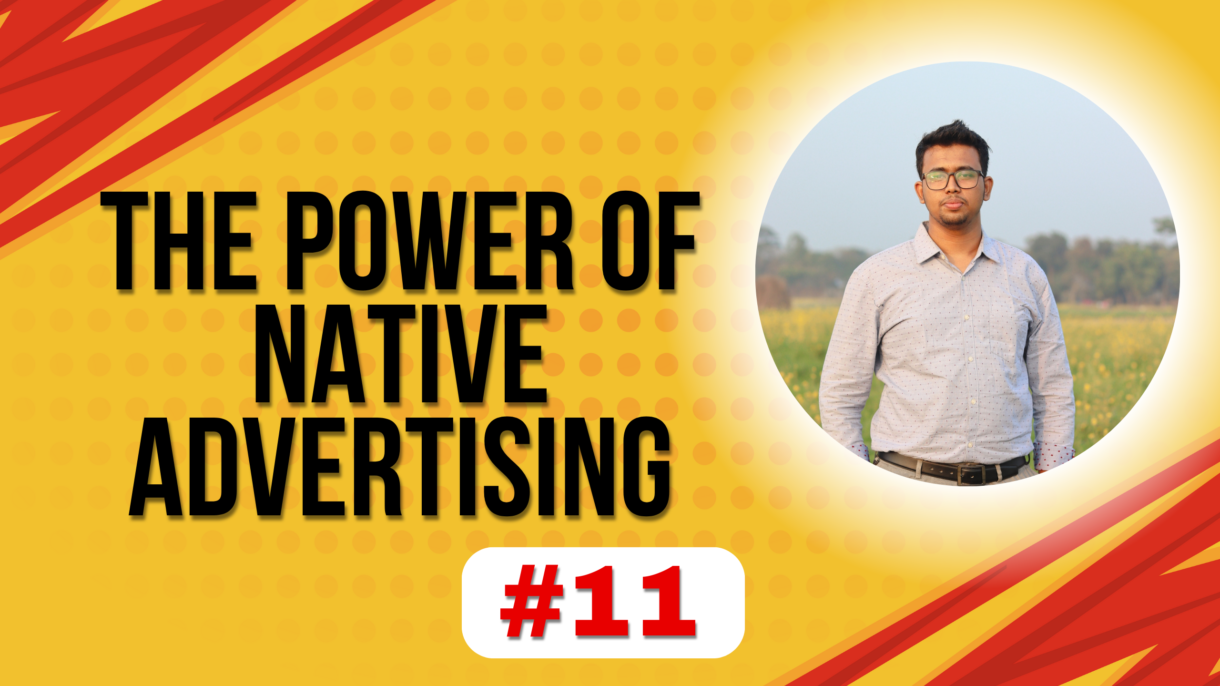In an era where consumers are increasingly sophisticated and selective about the content they engage with, traditional advertisements are often bypassed or ignored. This is where native advertising comes into play, blending in seamlessly with the content and providing a powerful way to engage users.
A well-crafted native ad can be far more effective than traditional ads, offering a non-intrusive approach that resonates better with audiences. Here, we’ll dive into the essentials of creating a powerful native ad, discuss its benefits, and offer tips for maximizing impact.
What is Native Advertising?
Native advertising is a form of paid media where the ad experience follows the natural form and function of the user experience on the platform where it’s published. This means that, unlike traditional ads, native ads look, feel, and function like the surrounding content, appearing within feeds, recommended content, or search results without disrupting the user experience.
Examples of native ads include sponsored posts on social media, in-feed ads on content platforms, or even suggested reading sections on news sites. Because these ads feel natural to the environment they’re in, they’re often more engaging and less likely to be ignored.
Why Native Ads Are So Powerful
The power of native advertising lies in its subtlety and relevance. Here are some reasons why native ads outperform traditional formats:
1. Non-Intrusive User Experience: Native ads are designed to blend in, so they don’t interrupt the user experience. They’re seen as part of the content rather than an interruption, which increases engagement.
2. Higher Engagement Rates: Studies show that native ads have higher click-through rates (CTR) than traditional ads because they appear in context and align more naturally with user intent.
3. Improved Brand Trust: Consumers often perceive native ads as more credible since they’re aligned with the platform’s content. When executed well, native advertising can foster trust and credibility for the brand.
4. Content-Based Appeal: Native ads allow brands to provide value to the reader through content, storytelling, or useful information, creating a more meaningful interaction compared to standard display ads.
5. Adaptability Across Platforms: Native advertising can be adapted to almost any platform, from social media and search engines to eCommerce and streaming services, allowing brands to reach users wherever they spend time.
Characteristics of a Powerful Native Ad
A powerful native ad is one that connects with the audience without feeling like an advertisement. Here are some of its key elements:
1. Seamless Integration: The ad should match the format, tone, and style of the platform. Consistency with the platform’s look and feel is critical.
2. Relevant and Valuable Content: Powerful native ads provide real value to users, whether through educational content, entertainment, or helpful information that aligns with their interests.
3. Clear, Yet Subtle Branding: While the ad should blend in, it’s essential that users can identify the brand behind the message, typically achieved through logos or discreet brand mentions.
4. Strong Call-to-Action (CTA): A subtle, effective CTA directs the audience to the next step, whether that’s learning more, signing up, or making a purchase, without being pushy or overly promotional.
5. Mobile-Friendly: With the majority of internet traffic now on mobile, a powerful native ad needs to be optimized for smaller screens to ensure readability and engagement.
Best Practices for Native Advertising Success
To maximize the impact of native advertising campaigns, here are some proven strategies:
1. Understand the Audience: Knowing your audience’s interests, behavior, and preferences is essential. This helps ensure the ad content is both relevant and engaging.
2. Use Storytelling Techniques: Native ads work best when they tell a story. Craft content that evokes emotions, builds connections, and makes your brand memorable.
3. Focus on Quality Content: Invest in well-crafted, informative, and visually appealing content that provides genuine value. Consumers are more likely to engage with ads that feel authentic and offer something meaningful.
4. Leverage Data and Personalization: Use audience data to personalize the content and delivery of your native ads. Tailored messages resonate better and increase engagement rates.
5. A/B Testing and Optimization: Regularly test different versions of the ad to see which elements resonate best. Testing headlines, images, and CTAs can help you refine the ad for maximum effectiveness.
6. Track Performance Metrics: Monitor key performance indicators (KPIs) such as CTR, engagement rates, and conversions to assess effectiveness and adjust strategies as needed.
Future of Native Advertising: Trends to Watch
With the rapid evolution of digital marketing, native advertising continues to adapt. Here are some emerging trends:
Video Content Dominance: Short-form videos are highly engaging and mobile-friendly, making them perfect for native ads on social media and content platforms.
AI and Machine Learning Integration: AI allows for better targeting and optimization of native ads, making it easier to deliver the right content to the right people at the right time.
Interactive and Shoppable Ads: Interactive elements and shoppable features in native ads are gaining traction, especially in eCommerce, as they make it easier for users to take action directly from the ad.
Conclusion
A powerful native ad can be an incredibly effective tool for connecting with audiences. By blending seamlessly into the user experience and offering relevant, valuable content, native advertising achieves what traditional ads struggle to do: engaging users meaningfully and building brand affinity.
As digital landscapes evolve, native advertising will continue to be a versatile and powerful strategy for brands seeking to enhance their visibility and engagement.



